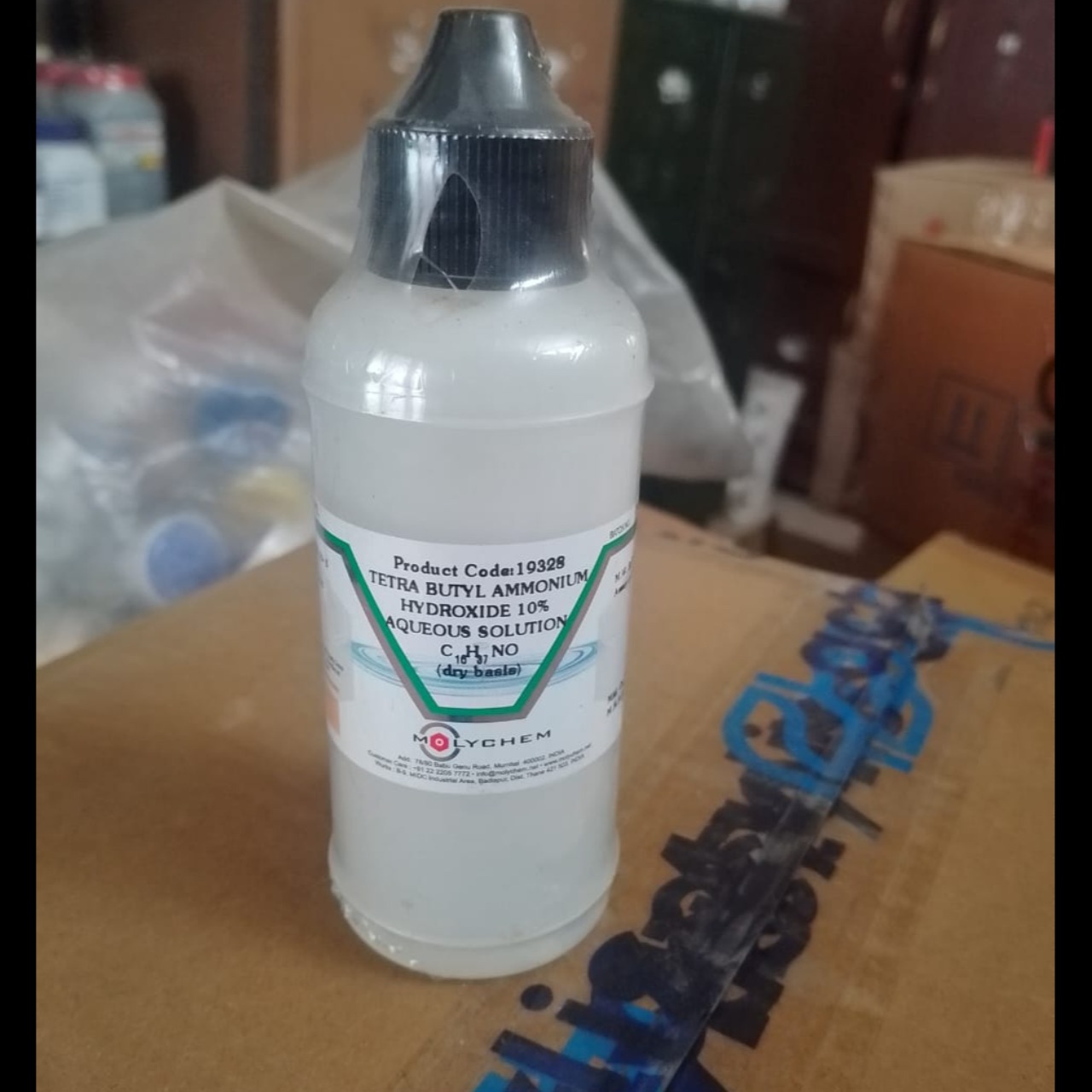
2025-10-07T10:59:03
Tetrabutylammonium hydroxide (TBAOH) is a strong, quaternary ammonium base commonly used in organic chemistry as a strong base and phase-transfer catalyst. It is typically supplied as an aqueous or alcoholic solution and acts to facilitate reactions between water-immiscible and water-soluble compounds, as well as in organic transformations like allenylation and hydroxyalkylation. Key applicationsAs a strong base and phase-transfer catalyst, TBAOH is used in a variety of chemical applications: Alkylation and deprotonation: Used to facilitate reactions in organic solvents that would otherwise require strong, insoluble inorganic bases. Catalysis: Accelerates various chemical reactions, including: The synthesis of cyclic carbonates from epoxides and carbon dioxide. The synthesis of α-hydroxyphosphonates. The hydroxyalkylation of phenols with cyclic carbonates. Epoxy curing: Serves as a curing accelerator for epoxy resins. Specialty titrant: Its solubility in non-aqueous solvents makes it an effective titrant for acids in these types of solutions. Material science: Used in the preparation of hexaniobate nanoscrolls and for dissolving cellulose under mild conditions. Synthesis of other salts: Can be neutralized with a variety of acids to produce other tetrabutylammonium salts that are soluble in organic solvents, such as tetrabutylammonium fluoride (Bu4NF). Hazards and handlingTBAOH is a hazardous chemical that requires careful handling. Corrosive: Causes severe skin burns and eye damage. Ingestion can cause severe burns to the mouth, throat, and stomach. Toxic: It can be toxic if swallowed, inhaled, or absorbed through the skin. Repeated exposure can lead to absorption through the skin, posing a significant health risk. Flammable (in methanol solution): Solutions in flammable solvents like methanol pose a fire risk. Reactive: Incompatible with strong oxidizing agents, strong acids, and certain metals. Proper handling: Always use personal protective equipment, including gloves, goggles, and a face shield. The substance should be used only with proper ventilation, such as in a chemical fume hood. is a strong, quaternary ammonium base commonly used in organic chemistry as a strong base and phase-transfer catalyst. It is typically supplied as an aqueous or alcoholic solution and acts to facilitate reactions between water-immiscible and water-soluble compounds, as well as in organic transformations like allenylation and hydroxyalkylation. Key applicationsAs a strong base and phase-transfer catalyst, TBAOH is used in a variety of chemical applications: Alkylation and deprotonation: Used to facilitate reactions in organic solvents that would otherwise require strong, insoluble inorganic bases. Catalysis: Accelerates various chemical reactions, including: The synthesis of cyclic carbonates from epoxides and carbon dioxide. The synthesis of α-hydroxyphosphonates. The hydroxyalkylation of phenols with cyclic carbonates. Epoxy curing: Serves as a curing accelerator for epoxy resins. Specialty titrant: Its solubility in non-aqueous solvents makes it an effective titrant for acids in these types of solutions. Material science: Used in the preparation of hexaniobate nanoscrolls and for dissolving cellulose under mild conditions. Synthesis of other salts: Can be neutralized with a variety of acids to produce other tetrabutylammonium salts that are soluble in organic solvents, such as tetrabutylammonium fluoride (Bu4NF). Hazards and handlingTBAOH is a hazardous chemical that requires careful handling. Corrosive: Causes severe skin burns and eye damage. Ingestion can cause severe burns to the mouth, throat, and stomach. Toxic: It can be toxic if swallowed, inhaled, or absorbed through the skin. Repeated exposure can lead to absorption through the skin, posing a significant health risk. Flammable (in methanol solution): Solutions in flammable solvents like methanol pose a fire risk. Reactive: Incompatible with strong oxidizing agents, strong acids, and certain metals. Proper handling: Always use personal protective equipment, including gloves, goggles, and a face shield. The substance should be used only with proper ventilation, such as in a chemical fume hood.

Have a question? Ask here!
Required fields are marked *